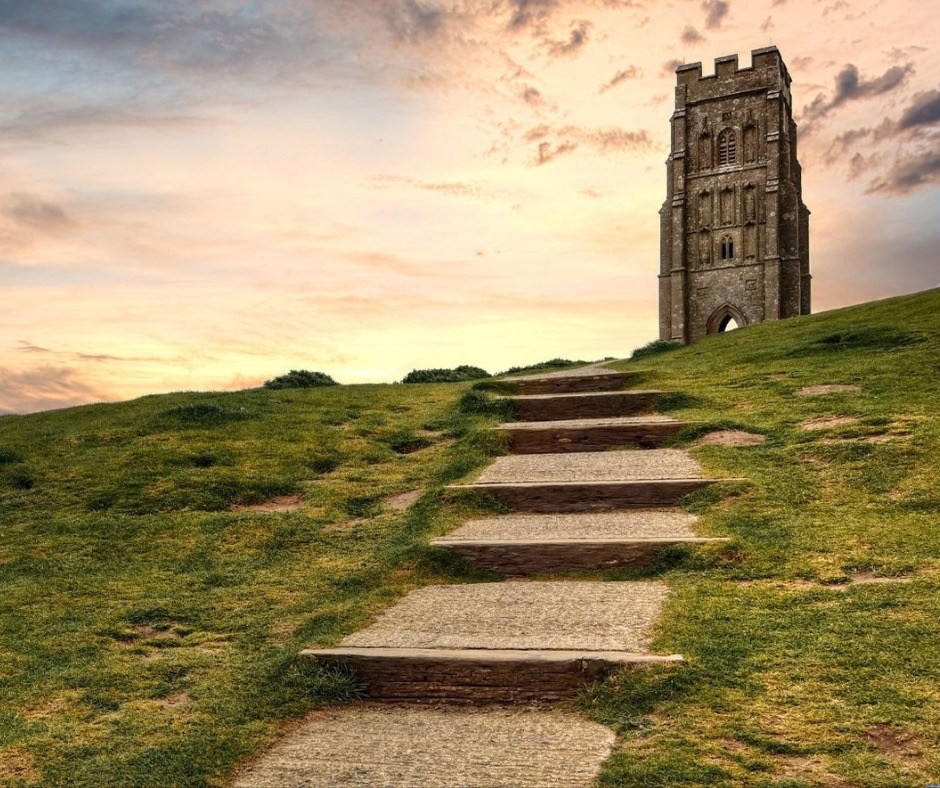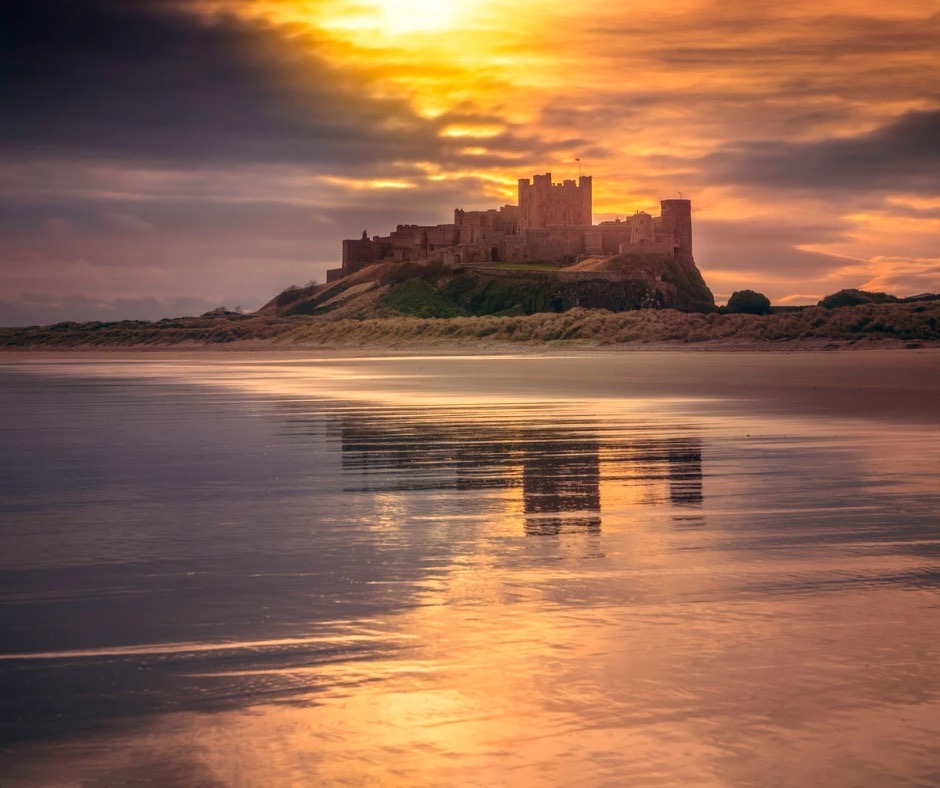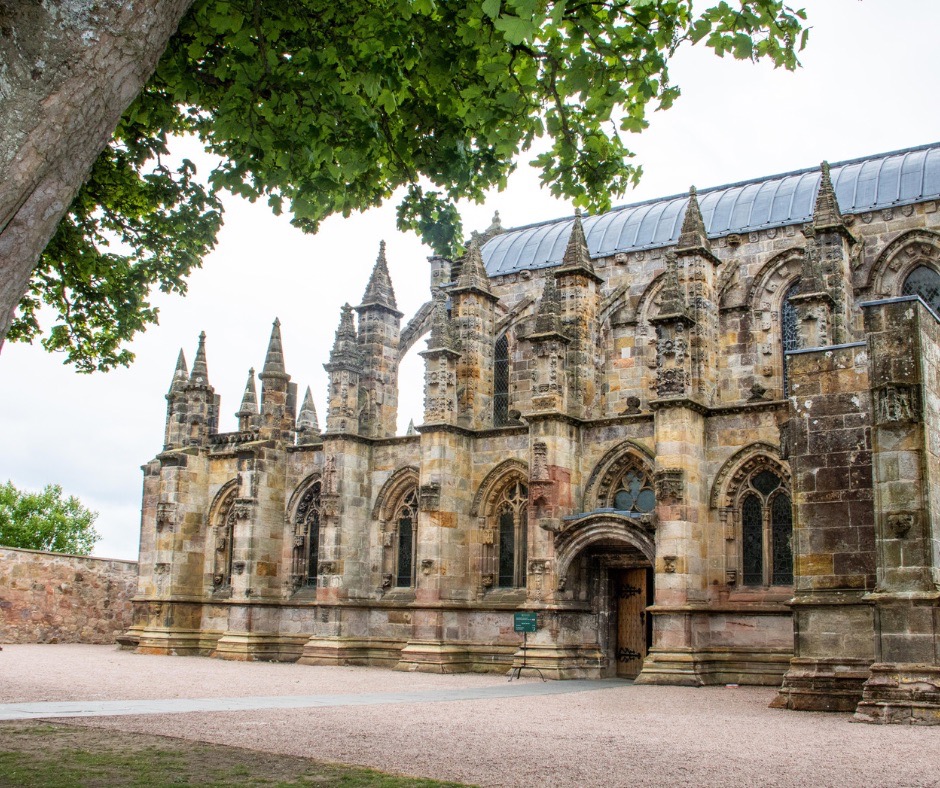England And Scotland- Albion Pilgrimage 9-17 June 2026
England And Scotland- Albion Pilgrimage 9-17 June 2026
Over 10,000 years of myths and histories. A pilgrimage through my childhood historic and mythical England and Scotland. We will visit Stonehenge 2500 BCE, Glastonbury Abbey (Joseph of Arimathea, Holy Grail) 601 & Glastonbury Tor (Island of Avalon, St Michael Ley and St Mary Ley), Tintagel Castle (1227-33) and Merlin's Cave, St Michael's Mount (Priory of Mont St Michel)- Archangel Michael, Bamburgh Castle and Lindesfarne Castle and Priory (Viking 793, St Aidan 635, Lindesfarne Gospels 8 century), Rosalyn Chapel (1446 Knights Templar & Holy Grail), Rydall Caves and Castlerigg Stone Circle 3000 BCE, Keilder Observatory 2008, and Hadrian's Wall 122-8.
A journey of soul transformation through iconic and rare historic and mythical England and Scotland. Meditate in 7000 years of historic pilgrimage and ancient ritual of Celt, Roman, Viking, and early Christian. Skywatch and view the Milky Way and Northern Lights in the exceptional Dark Sky Park, Keilder Observatory. We will visit Stonehenge 2500 BCE, Glastonbury Abbey (Joseph of Arimathea, Holy Grail) 601 & Glastonbury Tor (Island of Avalon, St Michael Ley and St Mary Ley), Tintagel Castle (1227-33) and Merlin's Cave, St Michael's Mount (Priory of Mont St Michel)- Archangel Michael, Bamburgh Castle and Lindesfarne Castle and Priory (Viking 793, St Aidan 635, Lindesfarne Gospels 8 century), Rosalyn Chapel (1446 Knights Templar & Holy Grail), Rydall Caves and Castlerigg Stone Circle 3000 BCE, Keilder Observatory 2008, and Hadrian's Wall 122-8. Travel mystical journeys that sacred call us to Merlin, Arthur, Marrion and The Holy Grail.
Includes
- Airport transfers
- Breakfast V. VG. GF, LF
- Japanese/English
- Accommodation based on twin share
- Tour transportation
- UK domestic flights
- Tickets for ancient and historic sites
- Workshops and Skywatches
Excludes
- International Travel
- Lunch, dinner & beverages
- All personal shopping

10:00-11:00 London Heathrow Departure from your designated hotel.
12:00-12:00 Stonehenge: Stonehenge is perhaps the world’s most famous prehistoric monument. It was built in several stages: the first monument was an early henge monument, built about 5,000 years ago, and the unique stone circle was erected in the late Neolithic period about 2500 BC. In the early Bronze Age many burial mounds were built nearby. 2500 BC the stones were constructed in centre of the monument. Two types of stone are used at Stonehenge – the larger sarsens and the smaller ‘bluestones’. The sarsens were erected in two concentric arrangements – an inner horseshoe and an outer circle – and the bluestones were set up between them in a double arc.
16:00-19:00 Glastonbury Tor St Michael's Church 1323 is the highest point of surrounding Glastonbury and viewpoint where the St Michael and St Mary leys intersect as an ancient mystical pattern of pilgrimage paths. There is a ruined medieval Church of Saint Michael at the top of the Tor, the tower of which remains. Two thousand years ago, at the foot of the Tor was a vast lake called “Ynys-witrin”, the Island of Glass, assocaited with Celtic mythology. Avalon was an isle of enchantment, the place of the dead. The tale has it that Joseph was an uncle of Jesus and also a merchant who traveled to Roman Britain as part of the lead trade centered on the Mendip Hills near Glastonbury. He took the young Jesus on one of his trading expeditions, an event alluded to in William Blake's hymn Jerusalem: "And did those feet in ancient time/Walk upon England's mountains green?/And was the holy Lamb of God/On England's pleasant pastures seen?"
Accommodation: Glastonbury

Glastonbury Abbey, located in the center of town below the Tor, dates at least to 601, and past excavations suggest that a Celtic monastery stood on the Tor itself in the fifth and sixth centuries. The Benedictine monastery became an important center of learning, and the town grew up around it. By the time of the Domesday Book in 1086, Glastonbury Abbey was England's wealthiest, though it would later be eclipsed by Westminster Abbey. Its buildings and grounds were magnificent, and its abbots wielded secular as well as spiritual power. In 1190 monks discovered bones they claimed to be those of Arthur and Guinevere buried on the grounds. They were later reburied in great state before the high altar of the Abbey church.
St Margaret’s Chapel was built by the Abbey as a place of prayer attached to the existing hospital for sick men. The building dates from 1444 and is Grade II* listed, and a Scheduled ancient monument. The chapel has features dating to the 13th and 15th centuries although the lancet window at the East end may be earlier.
Chalice Well is also known as the Red Spring. The natural spring and surrounding gardens are owned and managed by the Chalice Well Trust (registered charity no. 204206), founded in 1959. Chalice Well marks the site where Joseph of Arimathea placed the chalice that had caught the drops of Christ's blood at the Crucifixion, linking the Well to the wealth of speculation surrounding the existence of the Holy Grail.
In honour of the legend of the White Spring, Silver Spring Temple was created.
Following the St Michael Ley we journey to Tintagel and St Michael's Mount. During the 5th to 7th centuries, the island fortress of Tintagel was the stronghold of post-Roman Cornish rulers. Memories of Tintagel’s past glories inspired many legends, and in the 12th century, Geoffrey of Monmouth wrote that King Arthur was conceived here. The castle's atmospheric ruins stand partly on the mainland and partly on the island. In medieval times the two halves were connected by a bridge.
Accommodation: St Ives
Workshop

St Michael's Mount was centre for Christian pilgrimage in the 12th-14th centuries, at a time when it was closely associated with St. Michael the Archangel and the Benedictine order devoted to him, several other religious and spiritual associations are more recent. One notable folkloric tale, which arose long after the Order had departed, concerned the manifestation of St. Michael on the island. This was also influential in a more modern folkloric connection, that of the island being located at the intersection of two “leys” (lines of spiritual power): one English one, running north-east from St. Michael’s Mount to Bury St. Edmunds, and one international one, running south-east from Ireland to Bethlehem.
Workshop

The ruins of Tynemouth Priory stand on the rocky headland that guards the north side of the mouth of the River Tyne. Today's visitor to the headland gains admission to "Tynemouth Priory and Castle", as the headland has also had a very significant defensive role over the centuries. On this page we look at the story of Tynemouth Priory itself, and the remains of the priory church and the monastic buildings to its south. The origins of the first religious community to settle on the headland are vague. Evidence of settlement has been found from the pre-Roman and Roman eras, but the first monastery to be established here was probably built in the 700s. By the end of that century it was sufficiently important to be chosen, in preference to other Northumbrian monasteries such as Jarrow, Wearmouth and Lindisfarne, to be the burial place of King Osred II, who died in 792.
Bamburgh Castle- The historic capital of the Anglo-Saxon kingdom of Northumbria. Bamburgh Castle is the king of Castles. Believed to have been occupied for over 10,000 years the castle has evolved from a wooden palisade to the formidable fortress it is today.
Accommodation: Bamburgh Castle Village
Worshop

Lindisfarne, also known as Holy Island, is a tidal island off the northeast coast of England, which constitutes the civil parish of Holy Island in Northumberland.[3] Holy Island has a recorded history from the 6th century AD; it was an important centre of Celtic Christianity under Saints Aidan, Cuthbert, Eadfrith, and Eadberht of Lindisfarne. The island was originally home to a monastery, which was destroyed during the Viking invasions but re-established as a priory following the Norman Conquest of England. Other notable sites built on the island are St Mary the Virgin parish church (originally built in 635 CE and restored in 1860). The monastery of Lindisfarne was founded around 634 by the Irish monk Aidan, who had been sent from Iona off the west coast of Scotland to Northumbria at the request of King Oswald. The abbey was founded before the end of 634 and Aidan remained there until his death in 651 and it acted as a centre of the Christianisation of Northumbria. In the early 8th century the illuminated manuscript known as the Lindisfarne Gospels, an illustrated Latin copy of the Gospels of Matthew, Mark, Luke and John, was made, probably at Lindisfarne. In 793, a Viking raid on Lindisfarne is the beginning of the Viking Age.
Accommodation: Bamburgh Castle Village
Workshop: SkyWatch Bamburgh Castle Beach

Rosslyn Chapel was founded in 1446 by Sir William St Clair. The beauty of its setting, in rural Midlothian, the mysterious symbolism of its ornate stonework and its role in the Da Vinci Code have inspired, attracted and intrigued writers, artists and visitors ever since. There are more than 110 carvings of "Green Men" in and around the chapel. Rosslyn Chapel, is also known as the Collegiate Chapel of Saint Matthew. The Green Man is recognized as “the One who Manages the Forest” and is also a warrior. Figures intertwined with the Green Man have been recorded from even before the contemporary era (BCE). The “wild man,” “woodwose,” or “wodyn” was a common character in the theatrical world of Europe, always represented as a man covered in leaves, with shaggy hair and beards, leaf garlands on his head, and a club or firecrackers in hand. The earliest recorded example of this character archetype is Enkidu of the ancient Mesopotamian “Epic of Gilgamesh.” In the 15th-century Breton poem “An Dialog Etre Arzur Roe D’an Bretounet Ha Guynglaff,” King Arthur meets the wild man Guynglaff, who predicts events which will occur as late as the 16th century. Several other stories, such as 9th-century Irish tale “Buile Suibhne”, the 12th century origin of Merlin “Myriddin,” and 13th-century Norwegian tale “Konungs skuggsjáthe”—the King’s Mirror—all include the imagery of an all-knowing, free, and wild man. The creation of the “wild man” figure drew from the lore of the Roman faun and deity of woods, Silvenous, and other pagan beings. In Slavic Mythology, there are many mythological forest diviy (wild people), such as the dikar, a short man with a big beard and tail; the lisovi lyudi, old men with overgrown bears that give silver to those who rub their noses; lihiy div, marsh spirits that send fever; and divnye lyudi short, beautiful humans that have a pleasant voice, live in caves in the mountains, and can predict the future. Despite being believed to be a pagan symbol, the Green Man became a common decoration on medieval churches as a symbol of transition. It is suspected that the association arose from the legend “The Golden Legend” where the biblical Adam appears as a Green Man himself, in demise by the hands of nature and time.
22:00 Keilder Observatory and SkyWatch. Kielder Observatory is an astronomical observatory located in Kielder Forest, Northumberland, England.
Accommodation: Keilder, Northumberland
Workshop

The main circle of Castlerigg has 38 large stones, some standing 3 metres (10 feet) high. The entrance seems to line up with the midwinter sunset. This neolithic monument is one of Britain's earliest stone circles, about 5,000 years old, and has been officially protected since 1883. Castlerigg Stone Circle (alternatively Keswick Carles, or Carles)[3][4] is situated on a prominent hill to the east of Keswick, in the Lake District National Park, North West England.[5] It is one of around 1,300 stone circles in the British Isles and Brittany, constructed as a part of a megalithic tradition that lasted from approximately 3200 BC to 2500 BC, during the Late Neolithic and Early Bronze Ages. The apparently unspoilt and seemingly timeless landscape setting of Castlerigg stone circle provided inspiration for the poets, painters and writers of the 19th-century Romantic movement. In John Keats' Hyperion, the passage "Scarce images of life, one here, one there,/Lay vast and edgeways; like a dismal cirque/Of Druid stones, upon a forlorn moor…" is alleged to have been inspired by his visit to the stones; a visit, it seems, with which he was less than impressed. Samuel Taylor Coleridge, in 1799, visited Castlerigg with fellow poet William Wordsworth and wrote of it, that a mile and a half from Keswick stands "…a Druidical circle [where] the mountains stand one behind the other, in orderly array as if evoked by and attentive to the assembly of white-vested wizards".
Rydal Water is a small body of water in the central part of the English Lake District, in the county of Cumbria. Rydal Cave is located near the hamlet of Rydal, between Grasmere and Ambleside in the Rothay Valley.
Accommodation: Hexham, Northumberland
Workshop

Housesteads Roman Fort was once garrisoned by 1,000 soldiers. It is aligned towards sunrise, making the east gate the main gate. From the rolling Cheviot Hills to the dramatic Whin Sill on Hadrian’s Wall, this is England’s last great wilderness. Less than 2,000 people live here, the least inhabited National Park in the UK. Hadrian's Wall (Latin: Vallum Hadriani; also known as the Roman Wall, Picts' Wall, or Vallum Aelium in Latin) is a former defensive fortification of the Roman province of Britannia, begun in AD 122 in the reign of the Emperor Hadrian. Hadrian (/ˈheɪdriən/ HAY-dree-ən; born Publius Aelius Hadrianus, 24 January 76 – 10 July 138) was Roman emperor from 117 to 138. Hadrian was born in Italica, in the present-day Andalusian province of Seville in southern Spain, an Italic settlement in Hispania Baetica; his gens Aelia came from the town of Hadria in eastern Italy. He was a member of the Nerva–Antonine dynasty. In Rome itself, he rebuilt the Pantheon and constructed the vast Temple of Venus and Roma. In Egypt, he may have rebuilt the Serapeum of Alexandria. As an ardent admirer of Greek culture, he promoted Athens as the cultural capital of the Empire. Emperor Hadrian is associated with the Temple of Isis at the Philae complex, where he commissioned and decorated the Gateway of the Emperor Hadrian.
Accommodation: Northumberland
Workshop

Departure Newcastle International Airport to London Heathrow